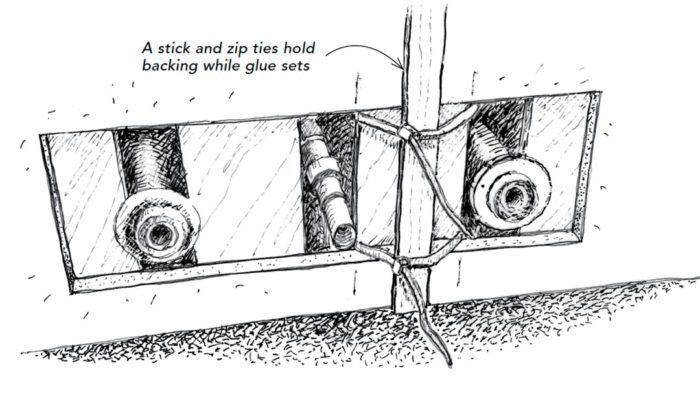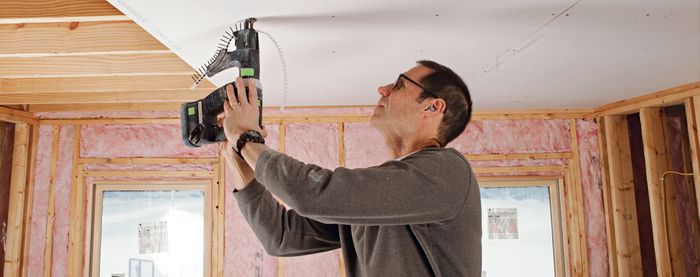Use Glue to Fasten Blocking For a Drywall Patch
When there are hidden pipes or wires you need to avoid hitting, this tip is a simple way to install backing without using screws.

Sometimes when installing backing for patches behind drywall you don’t want to use screws to hold the backing in place because of proximity to wires or plumbing pipes. When I have to make a patch like this, I glue wood backing to the backside of the drywall and clamp it there with zip ties and a stick. After the glue has set, I cut the ties, remove the stick, and fit in the new patch.
—March Coover, Dallas, Texas
Edited and illustrated by Charles Miller
From Fine Homebuilding #278


View Comments
I like this idea, particularly for tight spaces. If there is room enough to get the applicator behind the dry wall I use contact cement to hold the wood backing in place. Saves on zip ties.
Looking at the sketch above, why not use a board on the nearside, running horizontally, and wider than the total patch. One above and one below. The screw through that board to catch the vertical boards you're trying to glue into place. Wouldn't really matter if the screws went through the edge of the existing drywall since it's going to require a coat of compound anyway. Once the glue has cured/set, remove the screws and the nearside boards. No zip ties to waste and the screws will get reused somewhere.
Interesting tip- reminds me of Apple's slogan, "Think different."
I may or may not use it for drywall repairs, but as a professional handyman, I think "glues rather than screws" is a good concept to remember when I'm in the midst of, "OK, how do I fix this problem?"